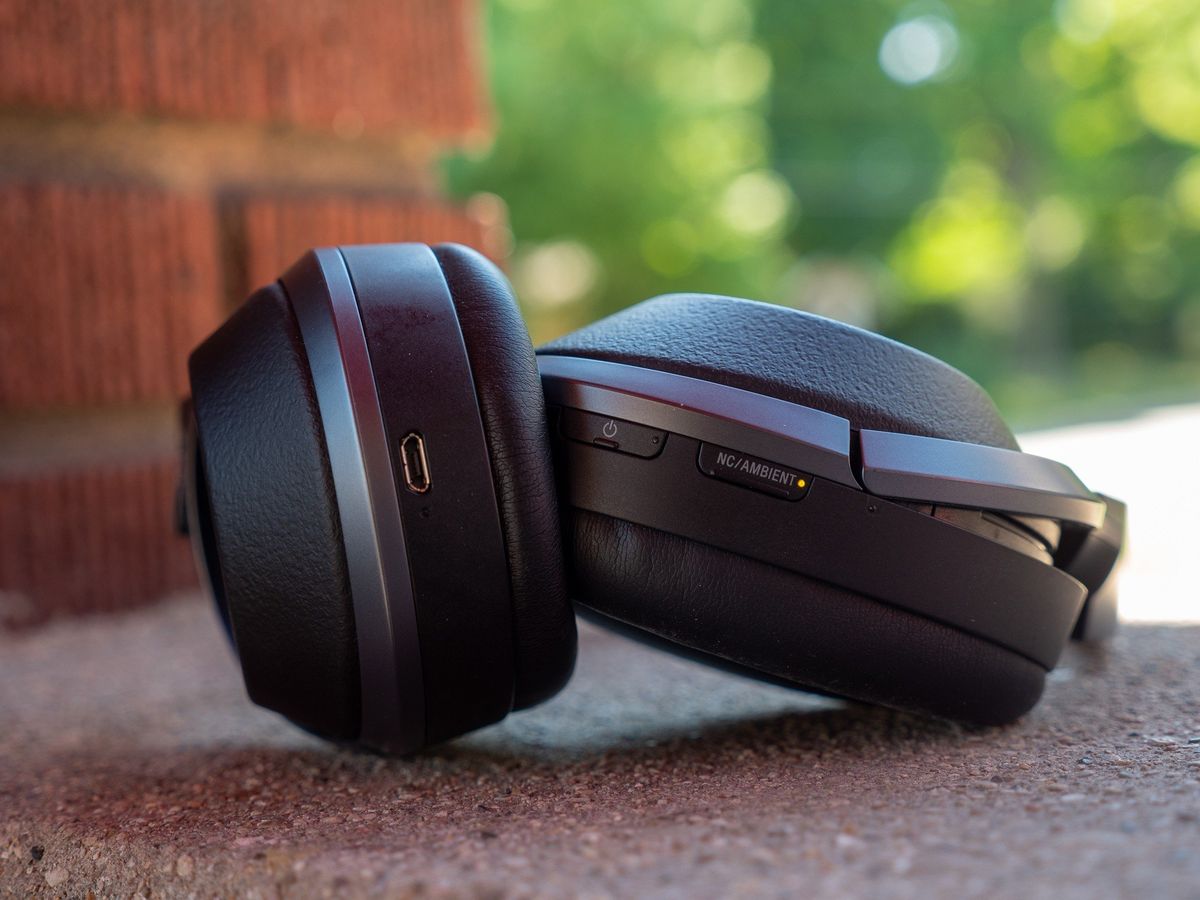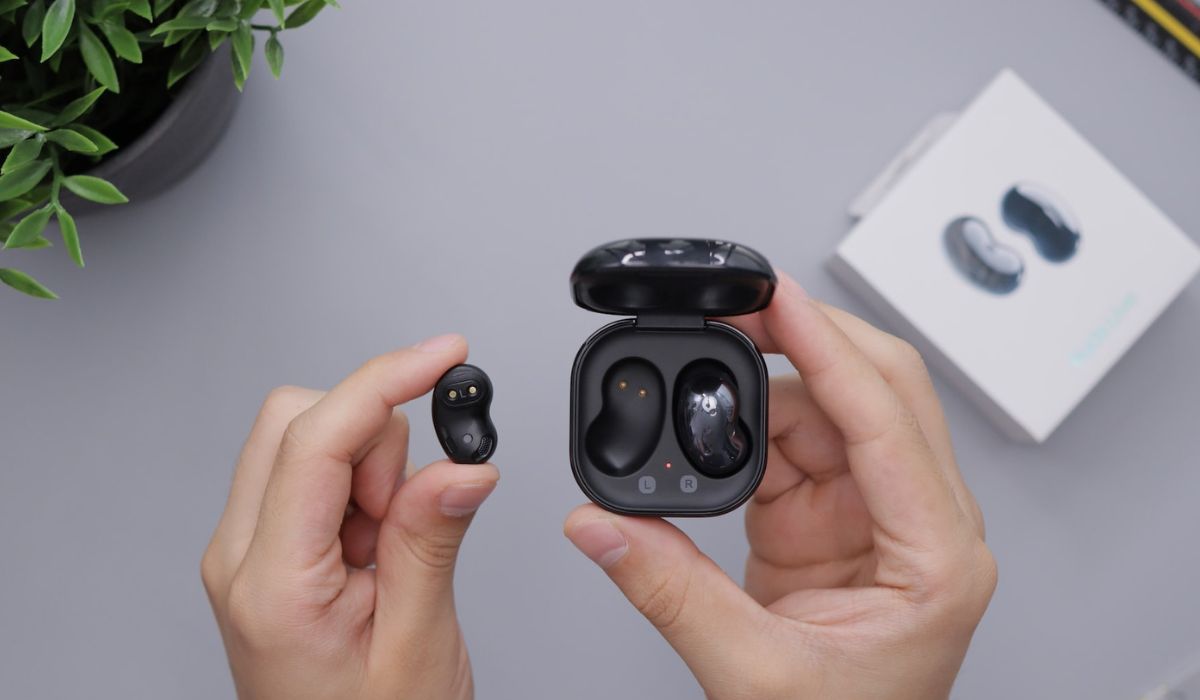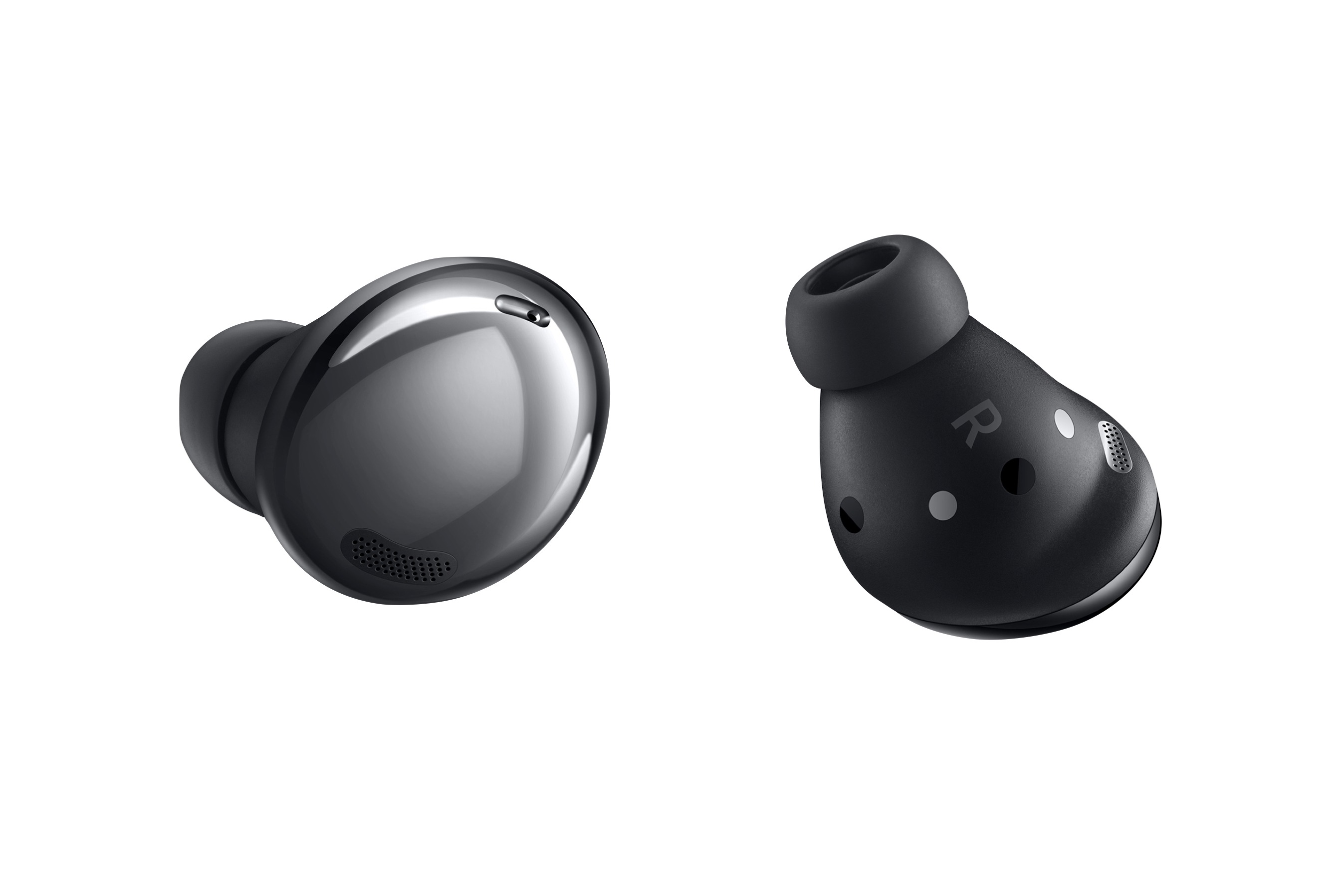Home>Production & Technology>Noise Cancellation>What Is Ambient Noise Cancellation?


Noise Cancellation
What Is Ambient Noise Cancellation?
Modified: January 26, 2024
Discover the benefits of ambient noise cancellation and how it can improve your listening experience. Explore how noise cancellation technology works and find the perfect solution for a noise-free environment.
(Many of the links in this article redirect to a specific reviewed product. Your purchase of these products through affiliate links helps to generate commission for AudioLover.com, at no extra cost. Learn more)
Table of Contents
- Introduction
- What is Ambient Noise?
- Understanding Noise Cancellation
- Types of Noise Cancellation
- Active Noise Cancellation
- Passive Noise Cancellation
- Benefits of Ambient Noise Cancellation
- Applications of Ambient Noise Cancellation Technology
- Challenges and Limitations of Ambient Noise Cancellation
- Conclusion
Introduction
Have you ever tried to focus on an important task or conversation, only to be distracted by the background noise around you? Ambient noise, such as the sounds of traffic, conversations in a busy cafe, or even the humming of household appliances, can be a constant challenge to our concentration and productivity. That’s where ambient noise cancellation comes in.
Ambient noise cancellation is a technology designed to reduce or eliminate unwanted background noise, allowing us to enjoy a quieter and more focused environment. Whether you’re working in a noisy office, traveling on a plane, or simply trying to relax at home, ambient noise cancellation can make a world of difference.
By using advanced algorithms and specialized hardware, ambient noise cancellation technology is able to analyze the incoming audio signals and generate an opposite sound wave, known as anti-noise or inverse sound, that cancels out the unwanted noise. The result is a significant reduction in overall noise levels, creating a more peaceful and immersive experience.
Central to the success of ambient noise cancellation is the understanding of noise itself. Noise can be defined as any unwanted sound that interferes with our desired listening or communication. It can range from constant and predictable sounds like the humming of air conditioning units to erratic and unpredictable sounds like the ringing of a mobile phone.
With the increasing prevalence of open office spaces, the rise of remote work, and the demand for immersive audio experiences, ambient noise cancellation has become a sought-after feature in various devices and applications. From noise-canceling headphones and earbuds to conference call systems and even smart home devices, the possibilities for using ambient noise cancellation technology are vast.
In this article, we’ll explore the different types of noise cancellation techniques, the benefits of ambient noise cancellation, its applications in various domains, and the challenges and limitations of this technology. So, grab your headphones or settle into a comfortable chair, and let’s dive into the world of ambient noise cancellation!
What is Ambient Noise?
Ambient noise refers to the continuous background sound present in any given environment. It can be natural, such as the sound of wind blowing, leaves rustling, or waves crashing on a beach. It can also be artificial, originating from man-made sources like traffic, machinery, or air conditioning systems.
Ambient noise is omnipresent in our daily lives, and it can have a significant impact on our well-being and ability to concentrate. It can be particularly bothersome in situations where clear communication or focused attention is crucial, such as during phone calls, meetings, or studying. Exposure to high levels of ambient noise for extended periods can also increase stress levels and lead to fatigue.
It’s important to note that not all ambient noise is considered disruptive or undesirable. In fact, some people find certain types of background noise, known as “white noise”, soothing and conducive to concentration. Examples of white noise include the sound of rainfall, a fan running, or a gentle breeze.
However, when ambient noise becomes excessive or unwanted, it can be detrimental to our productivity, comfort, and overall well-being. This is where ambient noise cancellation technology comes into play.
Ambient noise cancellation is designed to detect and filter out the unwanted background noise, allowing us to focus on the sounds we want to hear without being disturbed by the surrounding noise. By reducing the impact of ambient noise, it can enhance audio clarity and improve our ability to communicate effectively.
Overall, ambient noise is a ubiquitous part of our environment, and its effects on our daily lives should not be underestimated. Ambient noise cancellation technology offers a solution to minimize the negative impact of ambient noise, allowing us to create a more peaceful and conducive environment for work, relaxation, and communication.
Understanding Noise Cancellation
Noise cancellation is a technology that aims to reduce or eliminate unwanted background noise by generating an opposite sound wave that interferes with and cancels out the original noise. It is based on the principle of superposition, which states that when two sound waves of equal amplitude and frequency but opposite phase combine, they cancel each other out.
When it comes to noise cancellation, there are two primary types: active noise cancellation (ANC) and passive noise cancellation.
Active Noise Cancellation (ANC)
Active noise cancellation, also known as active noise control, is a technique that uses electronic circuitry and microphones to actively measure and analyze the ambient noise in the environment. It then generates an anti-noise signal that is played through a loudspeaker or delivered directly to the user’s ears via headphones or earbuds.
The anti-noise signal is designed to be phase-inverted and equal in amplitude to the unwanted background noise. When the anti-noise signal and the ambient noise combine, they cancel each other out, effectively reducing the overall noise level. This allows the desired audio, such as music or conversation, to be heard more clearly and with less interference from the surrounding environment.
Passive Noise Cancellation
Passive noise cancellation, also known as noise isolation or soundproofing, does not rely on electronic components or active noise cancellation algorithms. Instead, it uses physical barriers and materials to block or absorb sound waves and reduce their transmission.
Passive noise cancellation can be achieved through various means, such as the use of ear cups with a tight seal in headphones, acoustic foam or insulation materials in walls, or wearing earplugs. These physical barriers help to reduce the amount of ambient noise that reaches the listener’s ears, resulting in a quieter and less distracting environment.
While active noise cancellation provides more effective noise reduction across a wider range of frequencies, passive noise cancellation can still be beneficial in situations where electronic devices are not available or practical.
Understanding the nuances of noise cancellation is important to make informed decisions when choosing devices or technologies that offer ambient noise cancellation. Whether you opt for active or passive noise cancellation, both techniques have their own advantages and applications, contributing to a more peaceful and immersive audio experience.
Types of Noise Cancellation
Noise cancellation technology comes in various forms, each catering to different needs and situations. Let’s explore two common types of noise cancellation: active noise cancellation (ANC) and passive noise cancellation.
Active Noise Cancellation (ANC)
Active noise cancellation, as the name suggests, actively counters unwanted ambient noise by generating sound waves that are out of phase with the incoming noise. It relies on a combination of microphones, speakers, and advanced algorithms to achieve noise reduction.
ANC devices, such as noise-canceling headphones or earbuds, have built-in microphones that pick up the ambient sound. These microphones analyze the frequency and amplitude of the noise and generate an anti-noise signal to counteract it. The anti-noise signal is then played through the speakers, effectively canceling out the unwanted noise before it reaches the listener’s ears.
One of the key advantages of active noise cancellation is its ability to target specific frequencies and adapt to changing environmental conditions. This allows ANC devices to effectively reduce noise across a wide range of frequencies, from low-frequency rumbles to high-pitched sounds, providing a more immersive and enjoyable listening experience.
Passive Noise Cancellation
Passive noise cancellation, as the name implies, involves the use of physical barriers or materials to block or absorb sound waves. This method does not rely on electronic components or complex algorithms.
Passive noise cancellation can be achieved through the design of headphones or earbuds. For example, over-ear headphones often feature ear cups that provide a snug fit and create a seal around the ears, preventing external noise from entering. In-ear earbuds may use specially designed ear tips that create a secure fit, effectively isolating the ear canal from ambient noise.
Furthermore, passive noise cancellation can also be achieved using external measures, such as soundproofing rooms with acoustic panels or insulating materials. These physical barriers absorb or reflect sound waves, reducing their transmission and creating a quieter environment.
While passive noise cancellation provides some level of noise reduction, it may not be as effective as active noise cancellation, especially for low-frequency sounds. However, passive noise cancellation can still be beneficial in situations where electronic devices are not available or desirable.
Both active and passive noise cancellation techniques offer their own set of advantages and applications. Depending on your needs and preferences, you can choose the type of noise cancellation that works best for you to enjoy a more peaceful and immersive audio experience.
Active Noise Cancellation
Active noise cancellation (ANC) is a technique used to reduce or eliminate unwanted background noise by generating sound waves that are out of phase with the incoming noise. This technology has gained popularity in recent years and is commonly found in noise-canceling headphones, earphones, and even in some car audio systems.
The process of active noise cancellation involves three key components: a microphone, a speaker, and an electronic circuitry that analyzes the ambient noise and generates the anti-noise signal.
When you wear ANC headphones or earphones, the built-in microphone captures the external sound signals. These signals are then processed and analyzed by the electronic circuitry, which identifies the frequency and amplitude characteristics of the noise. Based on this analysis, the circuitry generates an inverse sound wave, known as anti-noise, with the same frequency and amplitude but opposite phase to the incoming noise.
The anti-noise signal is then emitted through the headphones or earphones’ speakers. When the anti-noise combines with the ambient noise in your surroundings, they cancel each other out. This results in a significant reduction in the overall noise level, allowing you to enjoy clearer and more isolated audio.
Active noise cancellation works most effectively on low-frequency sounds, such as the rumble of an engine or the hum of an air conditioner. While it may not completely eliminate all background noise, it can greatly reduce its impact and make your listening experience more enjoyable.
One advantage of active noise cancellation is its adaptability to different environments. It can adjust and respond in real-time to changing noise conditions, ensuring optimal performance in various scenarios. For example, ANC headphones can effectively attenuate the noise of an airplane’s engine during a flight or minimize the din of a crowded coffee shop when working or studying.
It’s important to note that active noise cancellation requires a power source, as the electronic circuitry and speakers require energy to function. This means that ANC devices, such as headphones or earphones, usually have built-in batteries or rely on external power, such as USB connections or charging docks.
Active noise cancellation technology has revolutionized the way we listen to audio, providing a more immersive and uninterrupted experience. Whether you’re a frequent traveler, a student studying in a noisy environment, or simply someone who wants to enjoy their favorite music without distractions, ANC offers a valuable solution to enhance your audio enjoyment.
Passive Noise Cancellation
Passive noise cancellation, also known as noise isolation or soundproofing, is a method of reducing background noise by using physical barriers or materials to block or absorb sound waves. Unlike active noise cancellation (ANC), which relies on electronic components and generates opposing sound waves, passive noise cancellation does not require any additional technology.
Passive noise cancellation can be achieved through various means, depending on the context and the desired level of noise reduction. One common application is in headphones or earbuds that are designed to fit securely and create a tight seal around the ears. By wearing these devices, ambient noise is physically blocked from entering the ear canal, resulting in a quieter listening experience.
Over-ear headphones often have ear cups that fully enclose the ears, providing a physical barrier between the listener and the ambient noise. The material used for the ear cups can also contribute to passive noise cancellation by absorbing or dampening external sounds.
In-ear earbuds, on the other hand, use specially designed ear tips that create a seal within the ear canal. This seal not only helps to keep the earbuds securely in place but also blocks external noise from entering the ears. Some earbuds even come with multiple sizes of ear tips to ensure a snug and personalized fit for maximum noise isolation.
Passive noise cancellation is not limited to headphone or earbud designs. It can also be achieved through architectural and interior design techniques. Soundproofing materials such as acoustic foam, insulation panels, and double-glazed windows can be used to minimize sound transmission between rooms or from external sources. These materials help to absorb or reflect sound waves, reducing their impact on the surrounding environment.
While passive noise cancellation is generally more effective at blocking lower-frequency sounds, it can still provide some reduction in higher-frequency noise. However, it may not be as efficient as active noise cancellation in canceling out dynamic or unpredictable noise sources.
One of the advantages of passive noise cancellation is that it does not require any additional power source. It relies solely on the physical properties of the materials used to create the barriers or absorb sound waves. This makes passive noise cancellation a convenient and accessible option for those who prefer a simpler approach to reducing background noise.
Whether you’re using headphones, earbuds, or employing architectural techniques for noise reduction, passive noise cancellation offers an effective way to create a quieter and more focused environment. It can help enhance concentration, improve audio clarity, and provide a more immersive listening experience.
Benefits of Ambient Noise Cancellation
Ambient noise cancellation technology offers a range of benefits that can greatly enhance our daily lives. Whether in the workplace, during travel, or simply for leisure, here are some key advantages of ambient noise cancellation:
Improved Focus and Productivity
One of the major benefits of ambient noise cancellation is the ability to concentrate better. By reducing or eliminating background noise, this technology creates a quieter and more conducive environment for work, study, or any task that requires focus. With fewer distractions, we can maintain higher levels of productivity and accomplish tasks more efficiently.
Enhanced Audio Clarity
Ambient noise cancellation allows us to enjoy audio content with greater clarity. By minimizing the impact of surrounding noise, we can fully immerse ourselves in the intended audio experience. Whether listening to music, watching movies, or engaging in audio calls, ambient noise cancellation technology ensures that the desired audio is the primary focus, free from unwanted interference.
Reduced Fatigue and Stress
Continual exposure to high levels of background noise can be mentally and physically draining. Ambient noise cancellation helps to alleviate the stress and fatigue associated with a noisy environment, promoting a more relaxed and comfortable experience. This can have a positive impact on our overall well-being and contribute to a healthier lifestyle.
Better Communication
Effective communication can be hindered by ambient noise, especially in crowded or noisy environments. Ambient noise cancellation technology improves speech intelligibility and reduces the need to strain to hear or be heard. Whether in important phone calls, meetings, or public spaces, this technology ensures that clear and effective communication is maintained, fostering better connections and understanding.
Promotes Hearing Health
Constant exposure to high levels of noise can lead to long-term hearing damage. Ambient noise cancellation helps protect our hearing by reducing our exposure to potentially harmful noise levels. By minimizing the need to raise the volume of audio devices to overcome background noise, this technology helps to maintain a safe listening level and preserve our hearing health in the long run.
These are just a few of the benefits that ambient noise cancellation technology provides. From increased focus and productivity to improved audio clarity and reduced stress, this technology plays a crucial role in enhancing our everyday experiences and maintaining a healthier and more enjoyable environment.
Applications of Ambient Noise Cancellation Technology
Ambient noise cancellation technology has found widespread applications across various domains. Here are some key areas where this technology is making a significant impact:
Headphones and Earphones
The most common and recognizable application of ambient noise cancellation is in headphones and earphones. Noise-canceling headphones use built-in microphones and advanced algorithms to analyze and counteract ambient noise, providing a clearer and more immersive audio experience. This technology is especially beneficial for travelers, commuters, and individuals working in noisy environments.
Telecommunications
Audio quality during phone calls and video conferences can be compromised by background noise. Ambient noise cancellation technology is extensively used in telecommunications devices and software to enhance voice clarity and minimize the impact of surrounding noise. This helps to improve communication and ensure that conversations are heard with greater precision.
Office Environments
Open office spaces can be noisy and disruptive, impacting productivity and concentration. Ambient noise cancellation can be incorporated into office communication systems, such as conference call equipment or desk phones, to reduce background noise and facilitate clear and effective communication. This technology enables employees to have more focused discussions and meetings, even in a shared workspace.
Automotive
With increasing road noise and traffic, ambient noise cancellation technology has found a valuable application in the automotive industry. This technology is utilized in vehicle sound systems to eliminate unwanted noise, delivering a quieter and more enjoyable driving experience for passengers. It also enhances the audio quality of in-car communication systems and entertainment systems.
Smart Home Devices
Smart home devices, ranging from voice assistants like Amazon Echo and Google Home to home theater systems, can benefit from ambient noise cancellation. By reducing background noise, these devices can better understand voice commands and provide clearer responses. Ambient noise cancellation also improves the audio quality of entertainment systems, ensuring an immersive home theater experience.
Healthcare
Ambient noise cancellation can play a vital role in healthcare settings, such as hospitals and clinics. By reducing background noise, this technology helps create a quieter and more peaceful environment for patients, improving their comfort and well-being. Ambient noise cancellation is also beneficial in telemedicine applications, where clear audio communication between healthcare providers and patients is essential.
These are just a few examples of the many applications of ambient noise cancellation technology. As the demand for a quieter and more focused environment increases, the applications of this technology continue to expand into new areas, providing improved audio experiences and enhancing our daily lives.
Challenges and Limitations of Ambient Noise Cancellation
While ambient noise cancellation technology offers numerous advantages, it is not without its challenges and limitations. Understanding these limitations is important to set realistic expectations and make informed decisions about its usage. Here are some key challenges and limitations of ambient noise cancellation:
Effectiveness in Certain Frequency Ranges
Ambient noise cancellation technology is most effective on low-frequency sounds, such as the hum of an air conditioner or the rumble of an engine. It may not perform as effectively in canceling out higher-frequency sounds, such as sharp voices or sudden loud noises. This limitation should be taken into consideration when using ambient noise cancellation in environments with varying noise frequencies.
Distortion and Artifacts
The process of generating anti-noise signals to cancel out ambient noise can sometimes result in distortion or artifacts in the audio. This can impact the quality and naturalness of the sound, especially in complex audio scenes or when using lower-quality noise cancellation devices. Advanced algorithms and high-quality hardware can help minimize distortion, but it is still a challenge for ambient noise cancellation technology.
Power Consumption
Active noise cancellation, in particular, requires an additional power source to operate the electronic circuitry and speakers. This means that devices utilizing active noise cancellation, such as noise-canceling headphones, need to be powered either by batteries or an external power supply. The need for power can limit the portability and convenience of these devices, as they may require frequent charging or access to a power source.
Unpredictability of Noise Sources
Ambient noise cancellation technology performs best when dealing with constant and predictable noise sources. However, it may struggle to effectively cancel out sudden and unpredictable sounds, such as sharp noises or intermittent background sounds. This can pose challenges in environments where noise levels fluctuate, like busy streets or cafes.
Physical Limitations
Passive noise cancellation, which relies on physical barriers or materials, may have limitations based on the design and fit of the devices. For example, if headphones or earbuds do not create a proper seal or fit securely, the passive noise cancellation effect may be reduced. Achieving an optimal fit is crucial for maximizing the benefits of passive noise cancellation.
Despite these challenges and limitations, ambient noise cancellation technology continues to improve and evolve. Manufacturers are investing in research and development to overcome these limitations and provide users with more refined and effective noise cancellation solutions.
It is important as consumers to be aware of these limitations, manage our expectations, and choose devices that strike a balance between performance and practicality in our specific usage scenarios.
Conclusion
Ambient noise cancellation technology has revolutionized the way we experience and interact with audio in different environments. Whether through active noise cancellation or passive noise cancellation, this technology provides numerous benefits that enhance our productivity, concentration, and overall well-being.
By reducing or eliminating unwanted background noise, ambient noise cancellation allows us to focus better, improve communication clarity, and enjoy audio content without distractions. Whether it’s in the form of noise-canceling headphones, telecommunication systems, automotive audio, or smart home devices, ambient noise cancellation has found applications in various domains, catering to the needs of different users.
While ambient noise cancellation has its challenges and limitations, such as its effectiveness in certain frequency ranges and power consumption requirements, ongoing advancements in technology aim to overcome these obstacles and improve the overall performance of noise cancellation systems.
As we continue to embrace a fast-paced and noisy world, ambient noise cancellation technology provides a valuable solution to create a quieter, more focused, and immersive environment. It enhances our daily experiences by improving audio clarity, reducing stress, and promoting better communication.
Whether you’re a student seeking concentration while studying, a traveler desiring a peaceful journey, or a professional aiming for productivity in a bustling office, ambient noise cancellation technology offers an invaluable tool to enhance your audio experience and improve your quality of life.
In conclusion, ambient noise cancellation technology has become an integral part of our modern audio landscape, providing a harmony between our desire for tranquility and our need to stay connected and engaged with the world around us.











